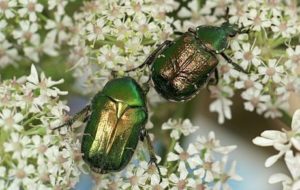Noble chafer beetle facts
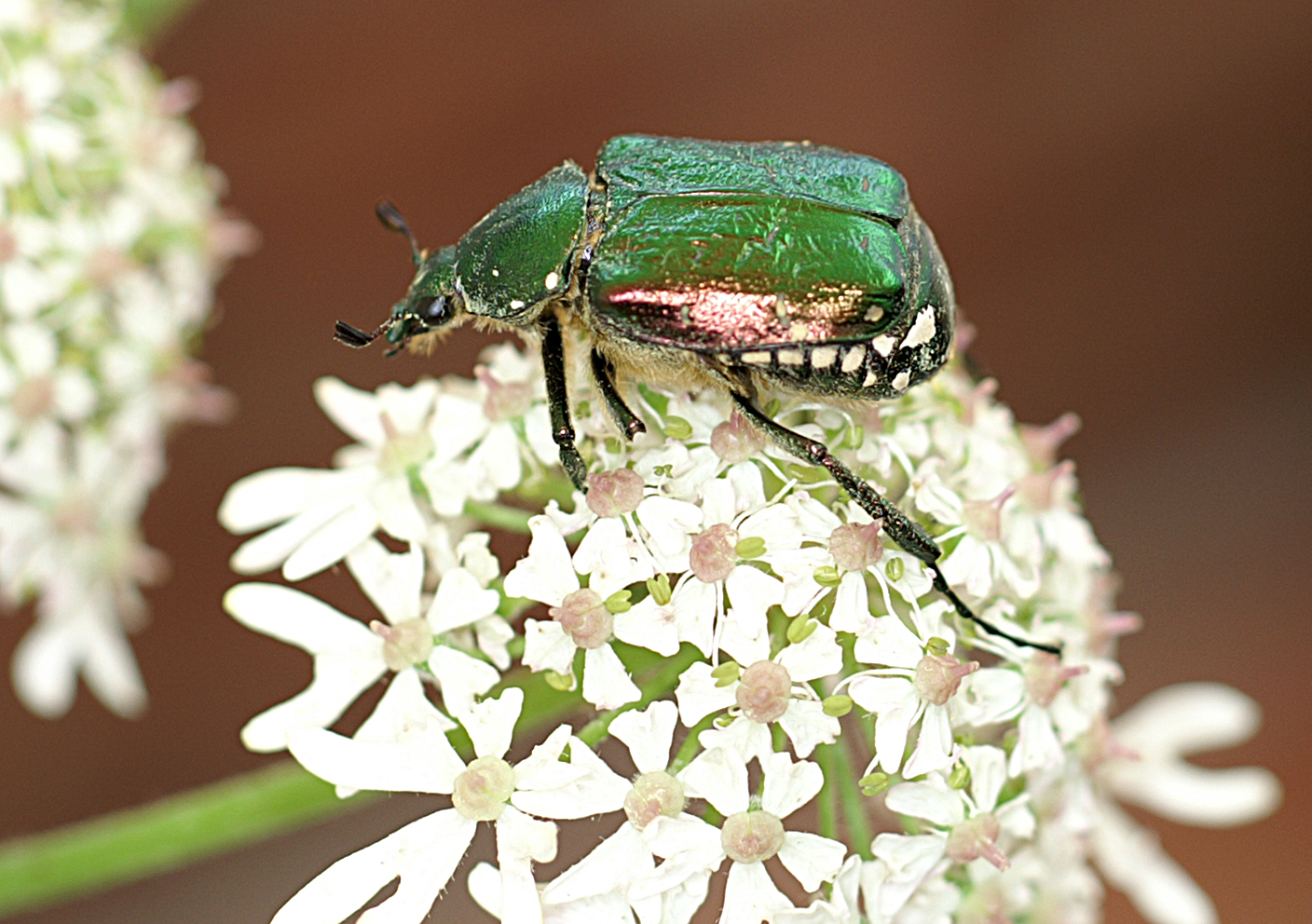
Status
Vulnerable
Population
Small isolated populations
Scientific name
Gnorimus nobilis
Identification
The noble chafer is a very striking beetle with its metallic green body, speckled with white.
The adult is about 2 cm long and the whole body displays a brilliant iridescence which can flash copper, gold and even violet when the light strikes it.
The noble chafer resembles a much more common species called the rose chafer (Cetonia aurata).
The most obvious difference between them is the small triangular area (the scutellum) between the wing cases. This forms an equilateral triangle on the noble chafer but is elongated on the rose chafer. The rose chafer is also more globular looking and lacks the ‘waist’ of the noble chafer.
Habitat
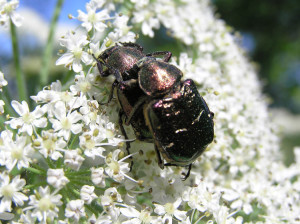
This rare beetle is associated with traditional orchards and wood pasture where it is dependent on old, decaying wood within live trees especially cherry, plum and apple. They exhibit a preference for orchards that contain mature fruit trees between 50 and 80 years old. These sites are vulnerable to removal or clearance, particularly if the trees are reaching the end of their productive life.
In the New Forest they are thought to breed within old oak and beech trees – they have only been seen so far as adults visiting flowers on road verges.
Diet
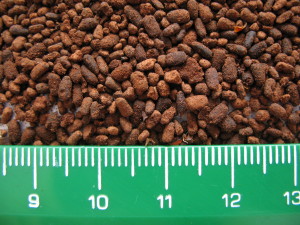
The young beetle grubs or ‘larvae’ feed on decaying wood debris in hollowed trunks and boughs. They produce characteristic droppings, called frass, which may become abundant and accumulate like fine gravel in hollow branches or trunks. The adult beetle feeds on pollen and nectar from a range of umbellifers (plants with clusters of tiny flowers) on sunny days from June to August.
Habits
Adult noble chafers emerge in early summer and live for about 4-6 weeks. The peak flight season is June and July. In the morning, after emerging from the tree, beetles will bask for a short while to warm up their flight muscles, then fly to feed on nearby flowers. Later on in the day they may be found up in the canopy some distance from their larval habitat.
Breeding
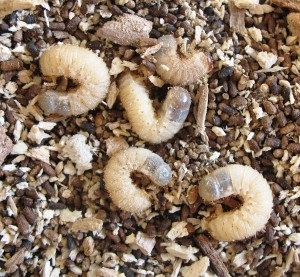
Noble chafer beetle grubs or larvae
Adult females lay up to 35 eggs beneath the bark or in the centre of the trunk of old, decaying fruit trees. The larvae hatch about two weeks later. They are white, c-shaped and grow to about 30mm long. They remain feeding within the tree for two to three years, until they pupate into adult beetles.
Adult noble chafers emerge in early summer and live for about 4-6 weeks. The peak flight season is from late-June through July and August. The adult beetles can sometimes be found visiting flowers such as hogweed, meadow sweet and elder. It is thought that some beetles never leave their host tree.
Distribution
The noble chafer is widely distributed throughout Europe. In England populations are centred around the fruit growing counties of Gloucestershire, Herefordshire and Worcestershire, with outlying populations in the New Forest and Oxfordshire.
Recently, noble chafers have been discovered in two adjacent orchards in Kent and two unconnected orchards in Buckinghamshire. Historically this beetle was also known to live in Essex, Northamptonshire, Devon and Cumbria.
Threats
As orchards were modernised, the old traditionally managed ones became progressively less economic
and were grubbed out and not replaced. Noble chafers are just one species which has been affected by this dramatic change to our landscape.
Status and conservation
In Britain, the species has been rare for the past century. The noble chafer is classified as ‘Vulnerable’ here, which means that it is facing a very high risk of extinction in the wild. It is a Biodiversity Action Plan (BAP) species with organisations such as ourselves taking special action to save them.

